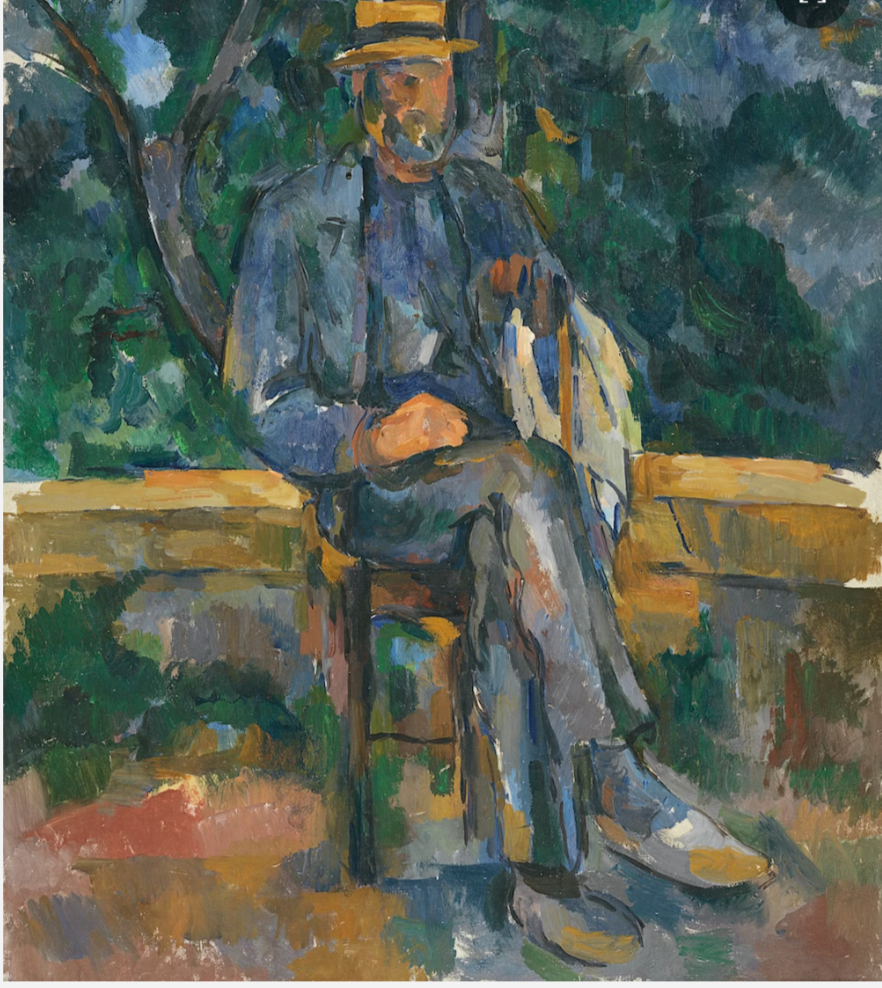 'Seated Man', 1905–6
Paul Cezanne. Museo Nacional Thyssen-Bornemisza, Madrid
'Seated Man', 1905–6
Paul Cezanne. Museo Nacional Thyssen-Bornemisza, Madrid
Paul Cezanne Retrospective @ Art Institute of Chicago
Paul Cezanne’s retrospective at The Art Institute of Chicago displays many of his later yearly works. These works demonstrate a noteworthy transition in the continuity of the Western Fine Arts Tradition, away from scenes of intense and vivid religiosity towards the mundane and bromidic. His artworks seldom strain to make efforts at capturing something forcefully confidently beyond man’s rational powers – or his strains at becoming everlasting.
Beyond the amazingly masterful craftsmanship at oil, with delectable broad-brush strokes which capture the quintessence of imperfection, we have a high expression of the European continents transition away from Catholic Church dominion within the psyche of Western man, towards what I merit to be consistent with the spiritual liberation of the Christian psyche. And this is witnessed with Mr. Cezanne’s subject matter.
Mr. Cezanne in his later years depicts themes of the ordinary beyond still-life. The Bather (1885) summons the Nietzschean “Last Man” critique of the modern European. Now free from the bondage of church going, toward self-reliant national sovereignties, the leaders of this spiritual march toward greater political equity are represented ingloriously heretofore, without the audacity to be bold enough to step forward steadfastly. The tremulous stretch of an anti-heroic male figure is appropriately diametrical to the eternal ideals of beauty from the “Ancients”. That the masculine is now represented to be nervous is perhaps French society’s own self-reflection of the machinery man now rationally plans his body around? I affirm, however, a more starkly dialectical agreement with archetypical Christian meekness, and its moral idea of vulnerability.
The Eternal Feminine is Cezanne’s most imaginative work during this exhibition, which speaks further to this anti-heroic ideal away from might which presupposes strength or will-power. The sense that even the Bishop of Rome, the Pope, submits to a maternal authority is one which necessarily imposes a condition of gentleness to the divine. This is the quintessentially counter-intuitive mystique of the Civilizing message of Christianity – the pride in obeying a womanly power without recognizing the dark paths possible in every woman’s soul. The concept of feminine lacks the concept of justice in Cezanne’s perspective. We have order without the perspective of the lack of the physical might needed to impose it righteously. Blind obedience does not cultivate a higher man. It keeps him or her in the dark, away from enlightenment.
There is no doubt a consistent trend toward the commissioning of art works in the second half of the 19th century through the bourgeoisie or merchandising social class. The consistency with the plethora of growth in society of the archetypical disciplined tradesman and manufacturer of wares with the Dutch Golden Age is seen visibly with the still life and genteel landscapes Cezanne demonstrates here. It is his efforts at original playfulness with the depiction of each which gives us a distinct difference in the respective era’s awareness of fine art; with the Dutch Masters enjoying the frivolity of High Christian Europe and their serious meditations on the Christian soul. Here, Cezanne is left not so much abandoned but at a fulcrum in the motivation for producing fine art. The shift away from a spiritual power towards its base goodness – it is pleasing to look at and therefore experience in the mind – is consistent with the ostensibly mundane concentrations of Cezanne; yet nevertheless permits him the ability to be innovative if not daring with the coarseness of his oil’s coloring. He is being permitted, thanks to the Zeitgest, to creatively liberate paint away from an imitation of Nature and instead to begin informing other emotional perspectives than religious ecstasy or fervor.

